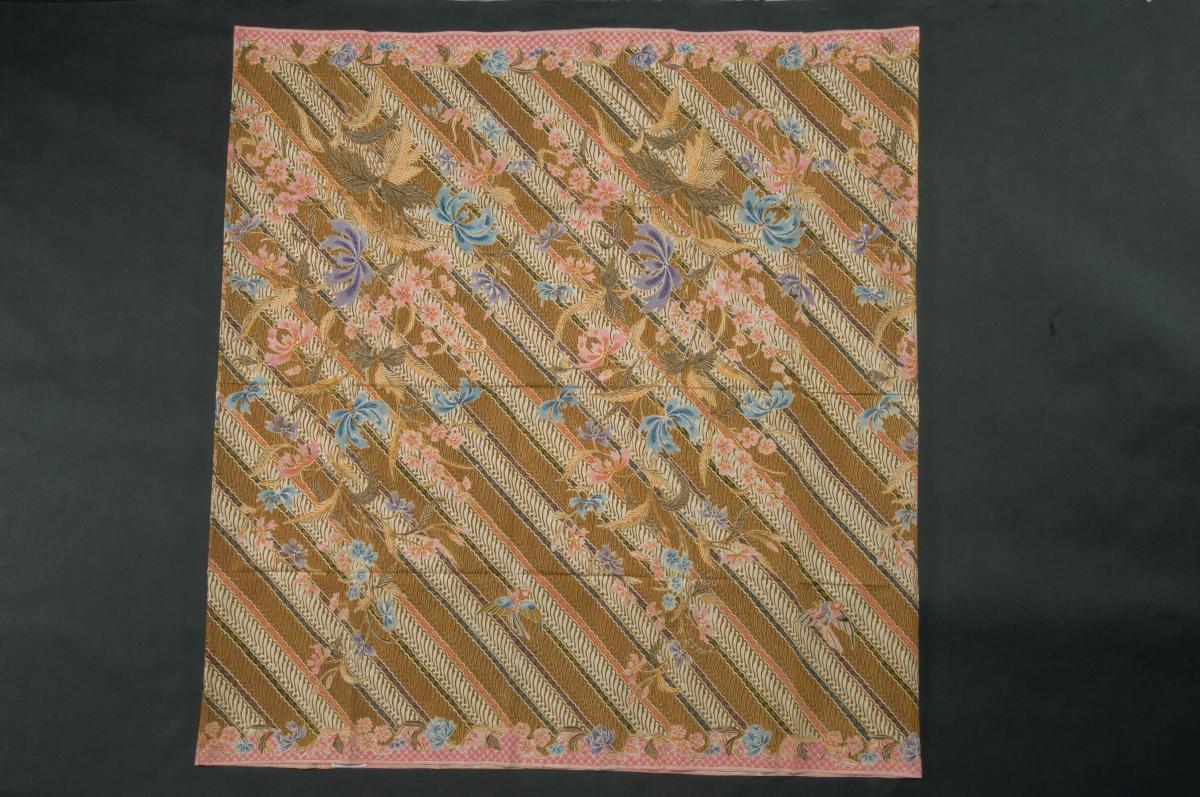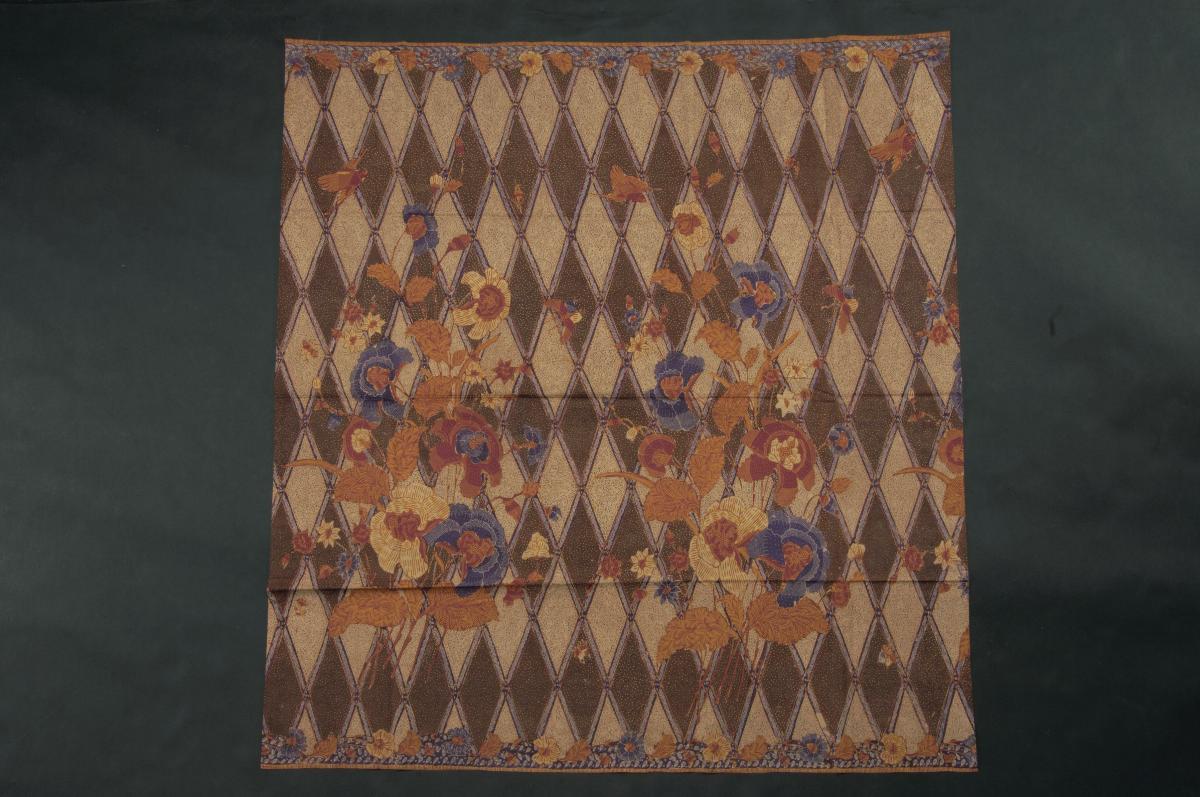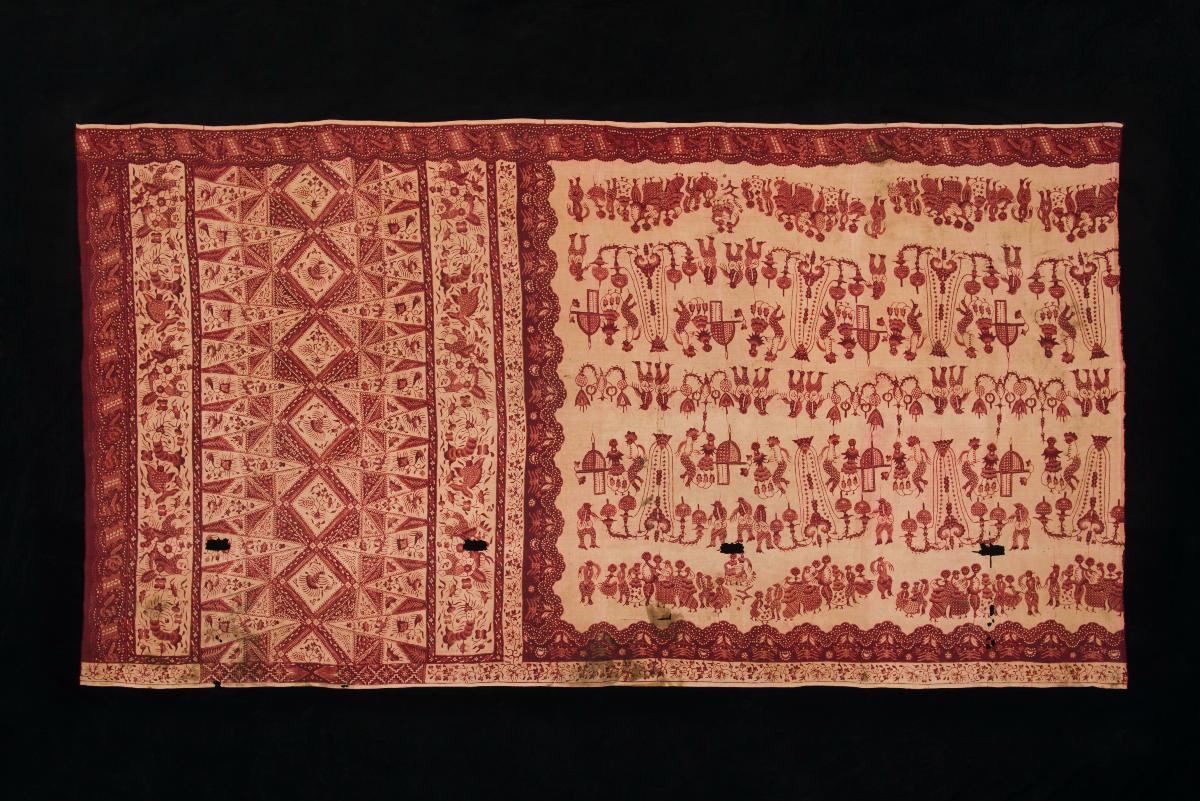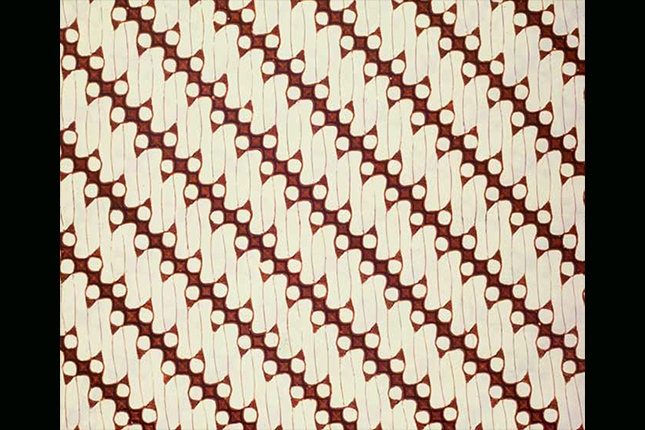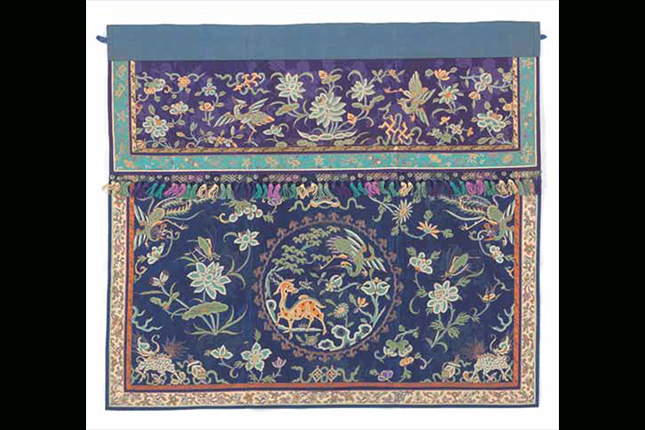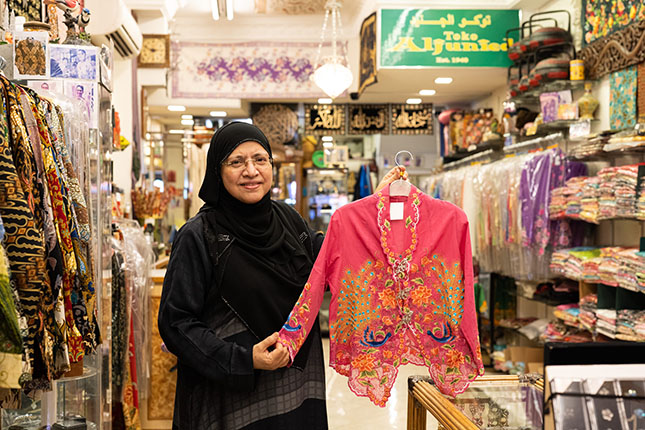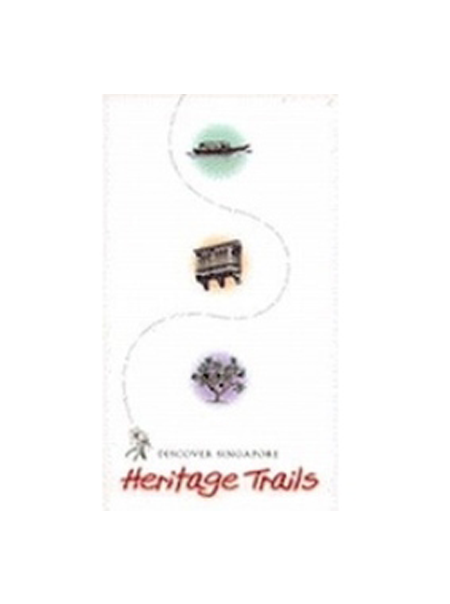Rows of opposing and interlocking triangles, known as tumpal or pucuk rebung, occupy the broad vertical panel (kepala) of this sarong. Together with the two panels flanking the kepala, known as papan, they divide the main design field (badan) into two equal parts. A profusion of lotus flowers, tendrils and stylised birds and animals is harmoniously executed on this piece. This batik is part of a large group donated to the museum by the descendants of three generations of female batik makers from Pekalongan. According to the family, it was made by the great grandmother of the donors, Nyonya Oeij Soen King, the first of the three generations. Her batiks were made in a style that was popular throughout most of the nineteenth century, characterised by a tumpal (saw-tooth pattern) placed at the “head” of a kain panjang (long cloth) or sarong. They are typically embellished with motifs from a sophisticated design repertoire that evolved in Java over several centuries. Although they have distinctly local characteristics, they combine influences from indigenous, Indian, Chinese, and Islamic art. The use of of natural red and blue dyes on a cream ground is also characteristic of batiks made during this period, before chemical dyes were introduced to the industry in the late 19th century. Nyonya Oeij Soen King was probably active until the 1920s, after which the business was taken over by her daughter-in-law, Nyonya Oeij Kok Sing.






